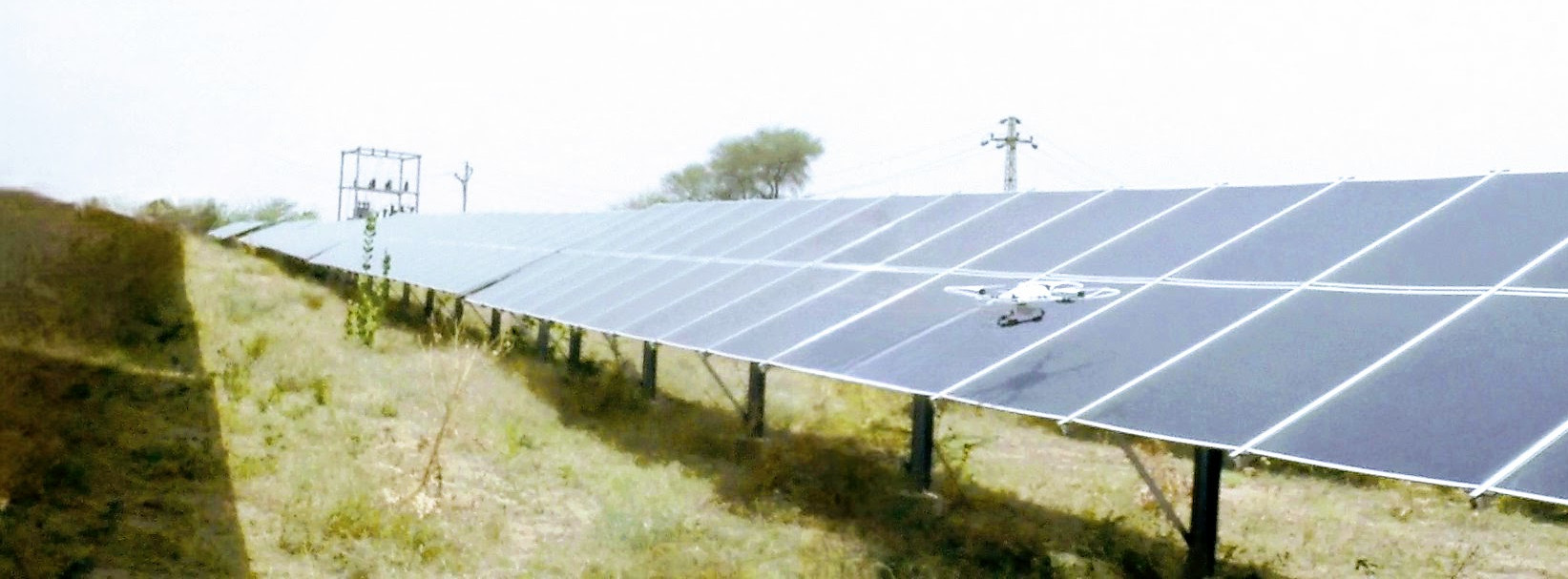AI in the Sky: Artificial Intelligence Unleashed for Eco-Friendly Cleaning
Drones generate airflow as a byproduct, a feature previously unexploited in autonomous flight. Conventional drone usage has primarily centered around payload transportation and inspection tasks. Recognizing an untapped intellectual property potential in this area, the founder of Aerial Power secured a patent for this novel approach.

The primary claim in a patent generally defines the extent of protection provided. The granted Patent EP3077882 (patent family applies), for instance, describes:
“A method for controlling a flying body for cleaning surfaces, comprising:
· a sensor system for detecting the geometrical characteristics of an object and aligning a flying body according to said object in order to clean it using the airflow of said flying body.”
In simpler terms, a drone navigates over objects, like solar panels, cleaning them with its airflow. The drone maintains alignment based on the identified geometric properties of the object. This unique technique allows for efficient, automated surface cleaning without physical contact or extra cleaning apparatuses.

Mission Planning
Based on the above calculations, a single drone can clean half a MW of installed PV capacity over five separate flights. Given advancements in this field, this capacity is projected to double. The industry is creating charging stations to house autonomous drones overnight. The long-term goal is for drones to permanently inhabit solar farms along with charging stations, simplifying the maintenance process and enhancing efficiency.
Aerial Power is conducting comprehensive research in flight planning and developing software to optimize flight missions. They’re also working on implementing swarm intelligence for maintaining large solar power plants. This includes efficient fleet management and maintenance strategies.
Vision Computing
By leveraging a blend of cameras and machine learning algorithms, the drone can analyze and identify solar panels. The AI-powered system then adjusts the drone’s flight path and cleaning strategy accordingly. This optimizes the drone’s cleaning efficiency, improving solar panel performance and reducing energy loss due to dirt accumulation.
Furthermore, the AI system allows the drone to modify its cleaning frequency for different segments based on their level of soiling. This leads to a dynamic cleaning schedule that conserves energy.
The drone system can also be equipped with advanced spot/dirt detection capabilities. Using sophisticated image recognition algorithms and high-resolution cameras, the drone can identify and target specific areas of soiling on the solar panels. This allows for precision cleaning, focusing on areas that are particularly dirty and might obstruct the panel’s efficiency.
By identifying and targeting these spots, the drone ensures that each panel is clean and operating at maximum capacity. This spot/dirt detection mechanism adds an extra layer of precision and efficiency to the drone’s cleaning operation, further contributing to the enhanced performance of solar panels.
Safety & Protocols
Aerial Power’s drones are compact and lightweight, engineered to operate at low altitudes and speeds. They come with mechanical guards for their propellers, enhancing safe flight operations and reducing the risk of panel damage, even in case of malfunction.
Using drone cleaning for solar panels in highly arid regions with airflow is likely to comply with the minimum legal requirements for airspace operation as they become available or easier to procure. This is due to their safe flight characteristics, the distance of solar power farms from populated areas, and the absence of additional payloads, which lowers the take-off weight.